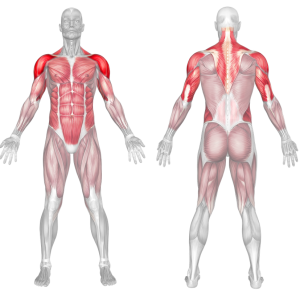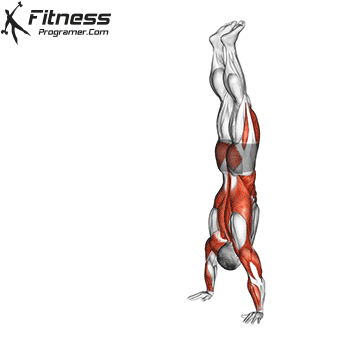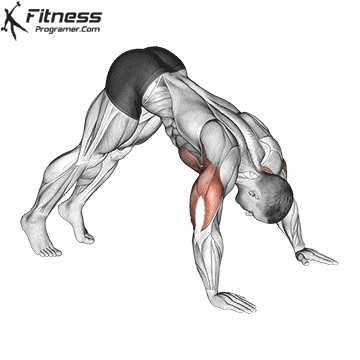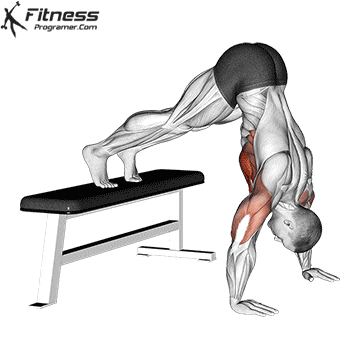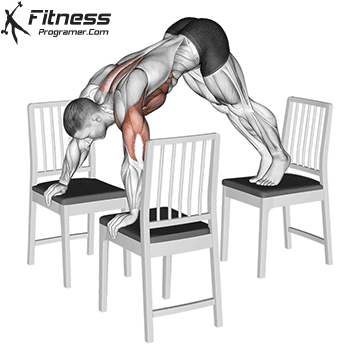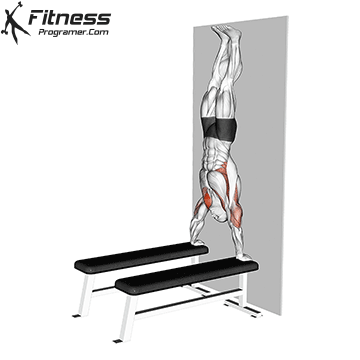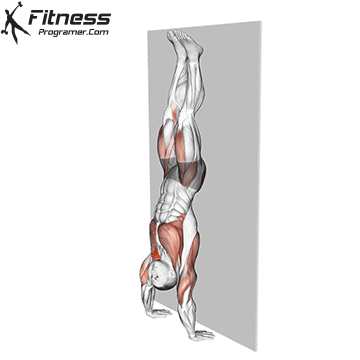Wall Walk Overview
The wall walk is a bodyweight exercise that strengthens the shoulders, chest, arms, and core while improving balance and coordination. It is commonly used in gymnastics, calisthenics, and CrossFit to help athletes develop the strength needed for handstands, handstand push-ups, and other overhead movements.
This exercise is ideal for beginners building strength and advanced athletes improving control in inverted positions.
How to Perform a Wall Walk
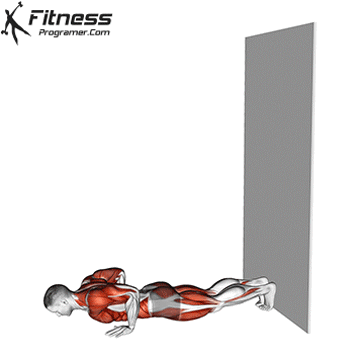
Step 1: Set Up in a Push-up Position
- Lie face down on the floor with your feet against a wall.
- Place your hands slightly wider than shoulder-width apart in a push-up position.
- Keep your core engaged and legs straight.
Step 2: Walk Your Feet Up the Wall
- Press through your hands and begin walking your feet up the wall.
- At the same time, move your hands closer to the wall.
- Maintain a straight body line without arching your back.
Step 3: Reach the Handstand Position
- Continue moving until your chest is close to the wall and your arms are fully extended.
- Hold this position briefly while maintaining control.
Step 4: Walk Back Down
- Slowly walk your hands away from the wall while lowering your feet back to the floor.
- Keep your core tight and avoid letting your body collapse.
- Return to the starting push-up position.
Repetitions and Sets
- Beginners can start with three to five repetitions with full control.
- Advanced athletes can perform multiple sets or increase time under tension in the handstand position.
Tips for Proper Form
- Engage Your Core – Keep your abdominal muscles tight to prevent excessive arching.
- Move Slowly and with Control – Avoid rushing to maintain balance.
- Keep Your Hands and Feet in Sync – Move them together smoothly for better control.
- Breathe Properly – Inhale while walking up and exhale when walking down.
- Use a Soft Surface – If new to wall walks, practice on a mat for safety.
Common Mistakes to Avoid
- Arching the Lower Back – Can cause strain and loss of control.
- Moving Too Quickly – Reduces stability and increases the risk of falling.
- Placing Hands Too Far Apart – Makes it harder to push up effectively.
- Not Engaging the Core – Leads to poor posture and instability.
- Allowing the Feet to Slip – Can cause falls, so ensure proper grip on the wall.
Benefits of Wall Walks
1. Strengthens the Shoulders and Arms
Wall walks build upper body strength, especially in the shoulders, triceps, and chest, making them an excellent handstand training exercise.
2. Improves Core Stability
This exercise activates the abdominal muscles to maintain balance and enhance total-body stability.
3. Develops Balance and Coordination
By walking up and down the wall, you improve motor control and coordination, crucial for gymnastics and functional fitness.
4. Prepares for Handstands and Inversions
Wall walks are a progression toward freestanding handstands, handstand push-ups, and other advanced movements.
5. Increases Shoulder Mobility
The full range of motion in wall walks improves shoulder flexibility and mobility over time.
6. Builds Mental Confidence
Many people feel intimidated by being upside down. Wall walks help build confidence in inversion movements in a safe and controlled manner.
Wall Walk Muscles Worked
